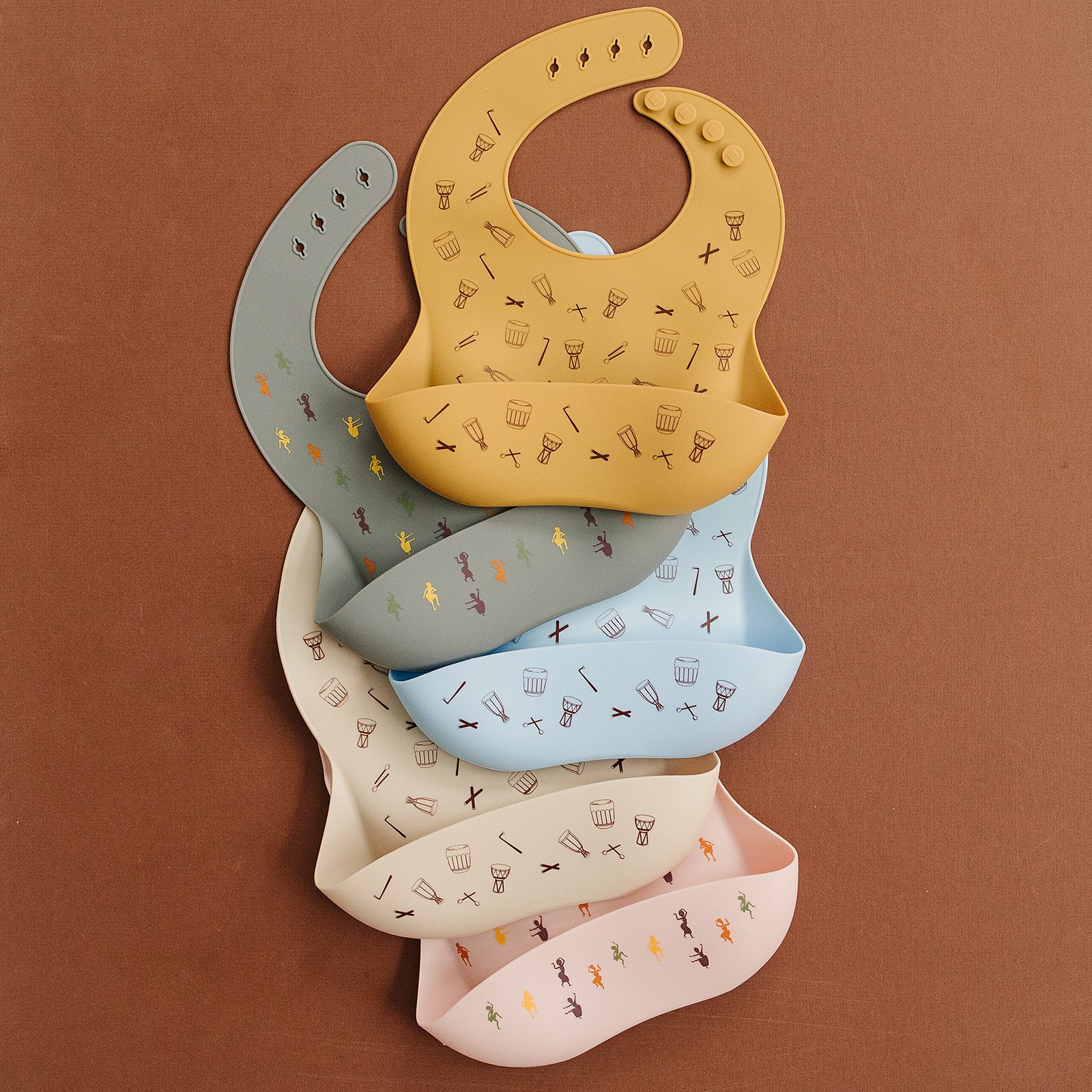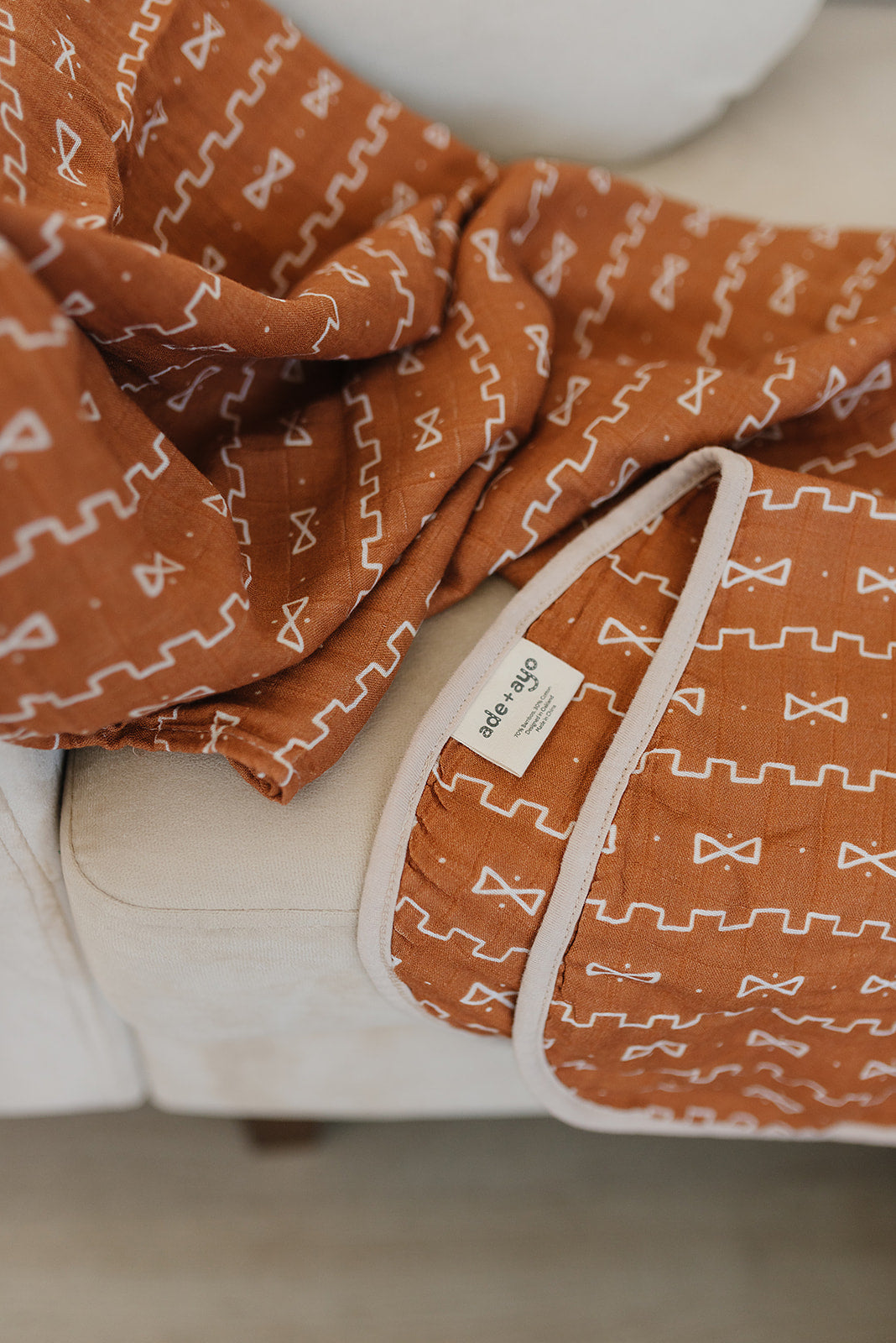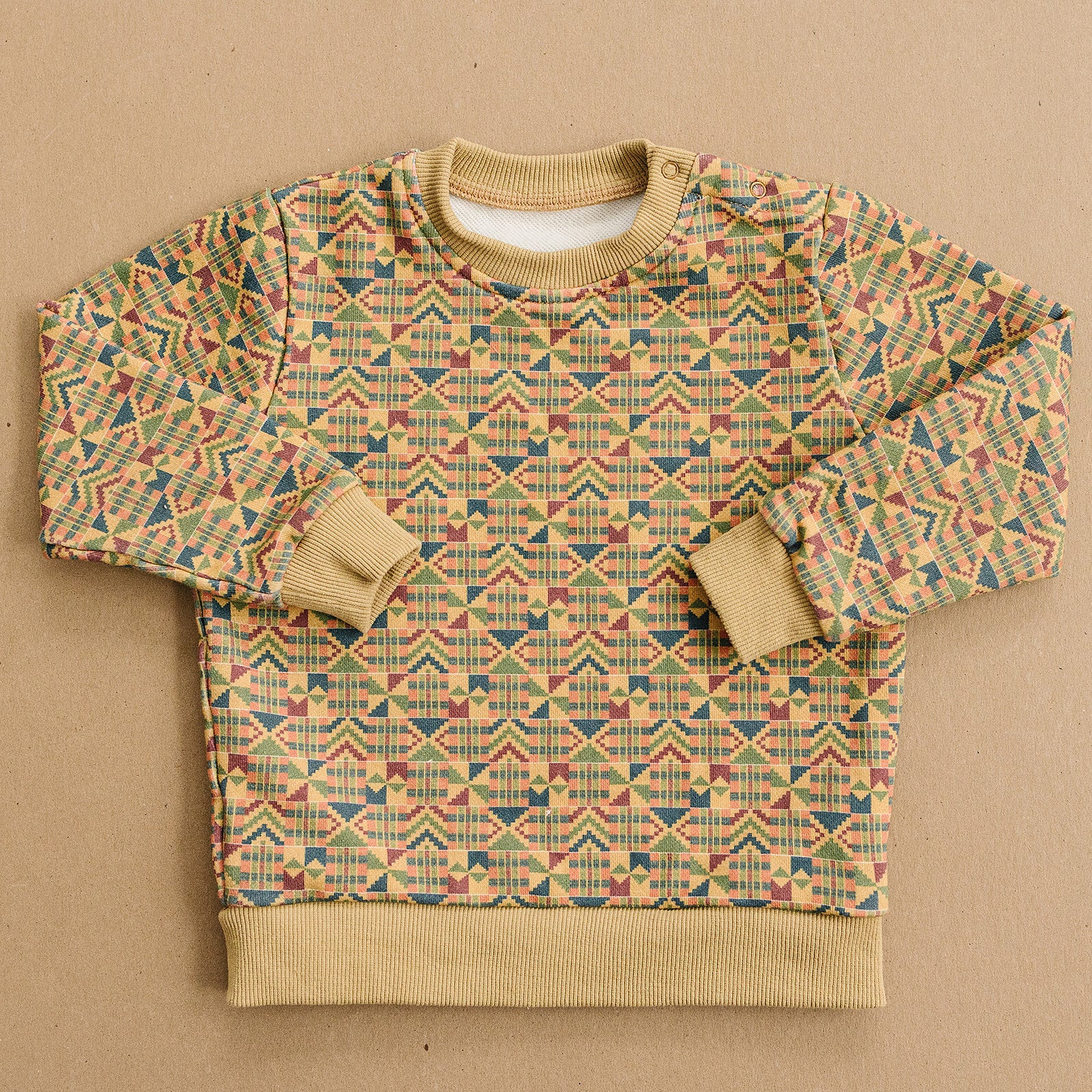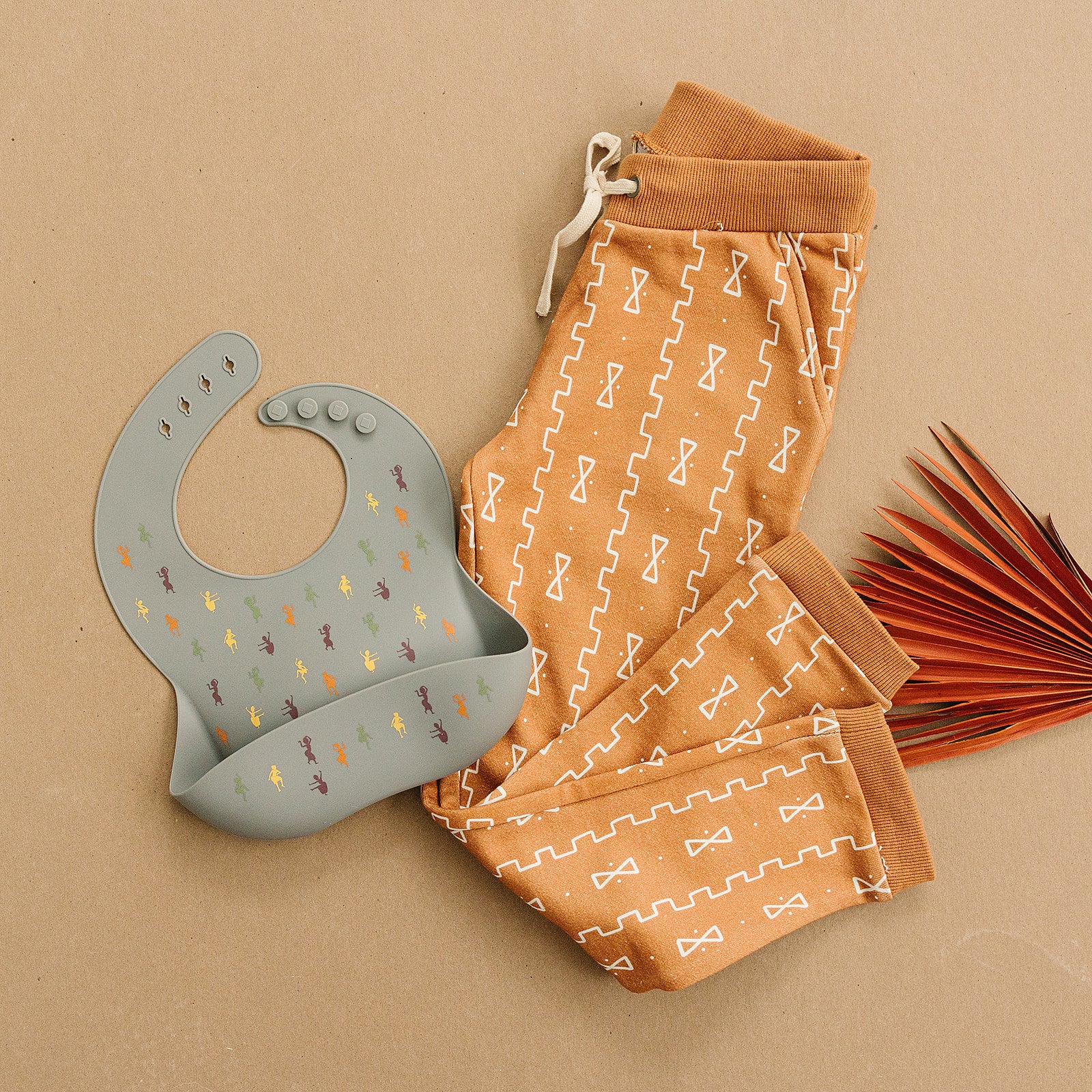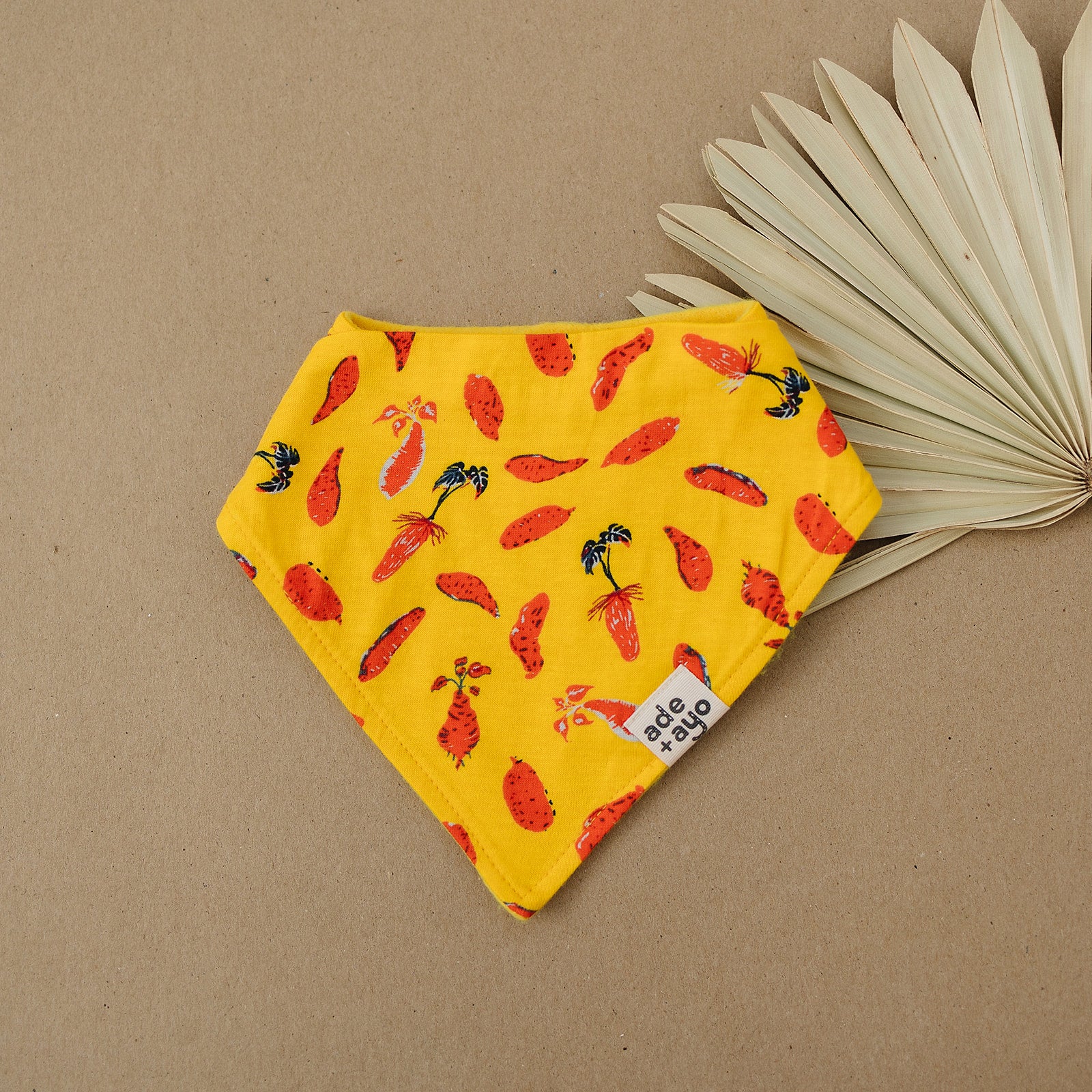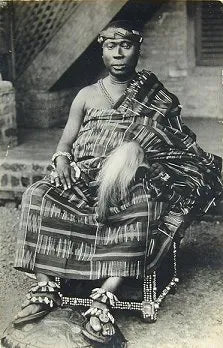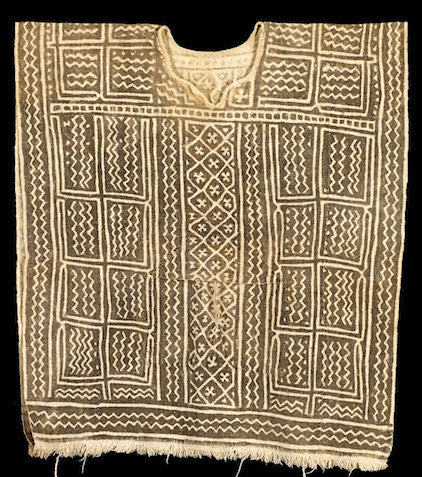A Closer Look at Popular African Prints and Their Origins
Clothing has been used as a medium for story telling for centuries, and some of the oldest textile designs documented can be found in Africa's rich history. Not only do these unique prints each have significant meanings, they also have specific ways in which they are fashioned according to African traditions. At Ade + Ayo, we have taken the traditional styles and prints of Africa and created our own unique prints to pay tribute to these beautiful styles. In this blog post, we'll be exploring the unique history of different styles of African prints, as well as what shape and form these traditional prints have taken here at Ade + Ayo!
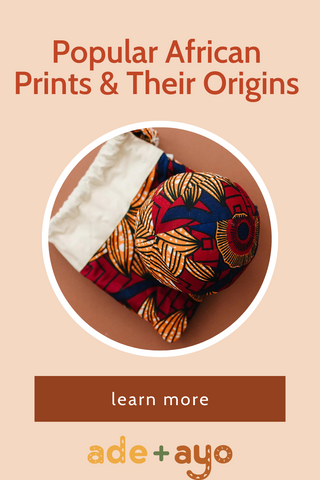
Ankara


The term African Ankara print is widely used as a catch-all phrase for fabric prints that have traditionally been associated with Africa, even though the designs themselves have varied greatly from place to place. Each region has contributed its own unique take on this style of cloth, which has allowed the craftsmanship of many African nations to shine through. To trace the history of African Ankara back to its origins requires a deep understanding of both local fashion design and international trades -- it began somewhere in West Africa some 700 yrs ago, when Dutch traders introduced locally made batik fabrics that were then adapted by various African cultures. Today, African Ankara is worn not only within Western Africa but can be found worldwide as a symbol of both elegance and heritage.
Ade + Ayo Prints that are influenced by this style print:
Kente

The African Kente print we see today is believed to have originated in Ghana and was initially used by the Ashanti tribe about 500 hundred years ago. According to oral tradition, Kente silk-woven cloths were only worn by royal members of the court, reflecting great honor and power. While it’s believed that Kente weaving began with one particular artisan, Ananse, stories tell us that there were many others who adopted the practice and perfected their own ways of creating stunningly colorful cloths. This rich history of culture has evolved into a tangible symbol of African pride that is recognizable around the world today.
Ade + Ayo Prints that are influenced by this style print:
Bògòlanfini/Mudcloth

The origins of the African bògòlanfini print, also known as ‘mud cloth’, can be traced back to the Mandinka tribe in Mali. This unique textile has been used for centuries to create colorful, intricate patterns for clothing and accessories. The material is made by hand-weaving strips of cotton ankle cloth, then painting it with fermented mud that was collected from local rivers. The fabric must then be stretched, dried and sealed with a solution made of mashed leaves, beeswax and oil. The end result is a colorful work of art that signifies power and strength within the Mande community. While originally created by the Mandinke people, modern day bògòlanfini fabric is beloved throughout Africa due to its longevity and beauty.
Ade + Ayo Prints that are influenced by this style print:
Kuba

The African Kuba print is a type of textile art with a long and rich history that begins in the Democratic Republic of Congo (DRC), formerly known as Zaire. The fabric was woven by members of an ethnic group that spans many regions in and around the DRC, referred to as the Kuba people. It dates back to at least the late 18th century, where the designs were mainly geometric in shape and featured diamond-like shapes. In addition, they included abstracted figures, pictures and other images. Today, these fabrics can be seen on clothing, accessories and home decor items featuring unique symbols that hint at their original use for royal ceremonies and sacred rites. While these prints are popular among many today, it's important to remember how this artwork has been used for centuries in African cultural traditions.
Ade + Ayo Prints that are influenced by this style print:
Batik

The African batik print, originating from Egypt and spreading across to neighboring African countries, is a beautiful and multifaceted art form. Often applying wax-resist dyeing techniques, the intricate embroidery on this type of ethnic fabric harks back to ancient Egyptian civilization, particularly with some early examples dating to the late Middle Kingdom (2055-1650 B.C.). During this period, hieroglyphic images were printed onto linen in bright colors derived from plants such as madder, woad and onion skin — this design was used primarily as a royal insignia in ceremony and other dress decorating occasions. Later studies suggest that many of the traditional patterns found in several African countries today are actually direct descendants of Egyptian designs; one example of which is a distinct argyle pattern usually associated with Ghanaian and Beninese cultures, which is thousands of years old! Although it underwent several adaptations during its journey across borders and flourished throughout many generations, the history of African batik prints is truly steeped in olden days' elegance.
Ade + Ayo Prints that are influenced by this style print:
Adire

Adire, also known as African resist-dyed cloth, is one of the most ancient and beautiful forms of textile art found in West Africa. The craft dates back centuries, likely originating in Yoruba communities in present day Nigeria before spreading out across the continent. The process involves using indigo and other natural dyes to create designs on fabric. This art was scrupulously preserved by skilled crafters, with images typically representing mythological motifs and spiritual consciousness. In addition to being an aesthetic delight, adire textiles have rich symbolic meanings such as human relationships to nature, the importance of family bonds, or the significance of certain animals within cultures. Today adire is widely popular around the world as a unique way to showcase Africa's vibrant culture and traditions through fashion.
Ade + Ayo Prints that are influenced by this style print:
If you haven't realized by now, these designs have influenced fashion and beyond all over the world. We hope you learned something, and that you get the chance to bring these designs (with respect) into your homes, wardrobes, and more.
And as always, be sure to follow on Instagram + Join Our Email List to save 15% off your first order from us here at Ade + Ayo!
photo credits from necessary images (images also linked):













